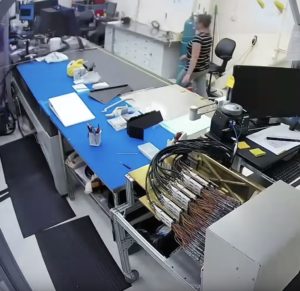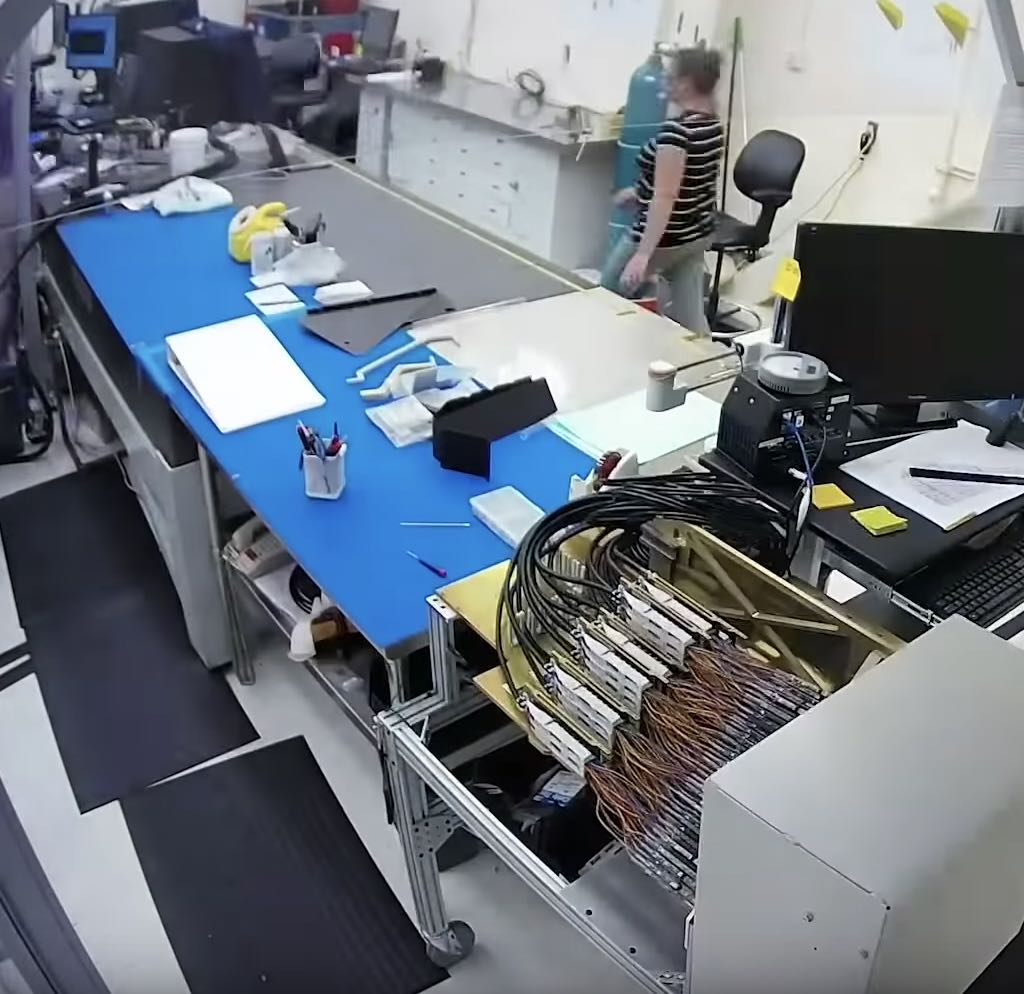 In this video, scientists describe how the Dark Energy Spectroscopic Instrument (DESI) will measure the effect of dark energy on the expansion of the universe. It will obtain optical spectra for tens of millions of galaxies and quasars, constructing a 3D map spanning the nearby universe to 11 billion light years.
In this video, scientists describe how the Dark Energy Spectroscopic Instrument (DESI) will measure the effect of dark energy on the expansion of the universe. It will obtain optical spectra for tens of millions of galaxies and quasars, constructing a 3D map spanning the nearby universe to 11 billion light years.
How do you create the largest 3D map of the universe? It’s as easy as teaching 5,000 robots how to “dance.” DESI, the Dark Energy Spectroscopic Instrument, is an experiment that will target millions of distant galaxies by automatically swiveling fiber-optic positioners (the robots) to point at them and gather their light. In creating this detailed map, scientists hope to learn more about dark energy, which is driving the accelerating expansion of the universe. Scientists working at Berkeley Lab are assembling this array of robots and their related electronics – which represent hundreds of thousands of individual parts – into a group of 10 wedge-shaped petals that will be fitted together to form a circular focal plane. The focal plane will be mounted near the top of the Mayall Telescope at Kitt Peak National Observatory near Tucson, Arizona.
This 3-minute video features interviews with two Berkeley Lab scientists:
- Joseph Silber, Focal Plane Lead Engineer, DESI
- Claire Poppett, Lead Fiber Scientist for DESI
- Video Credit: Marilyn Chung/Berkeley Lab
The DESI Survey will be conducted on the Mayall 4-meter telescope at Kitt Peak National Observatory starting in 2019. DESI is supported by the Department of Energy Office of Science to perform this Stage IV dark energy measurement using baryon acoustic oscillations and other techniques that rely on spectroscopic measurements.




